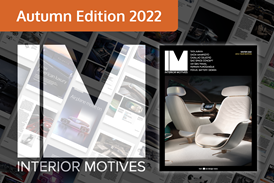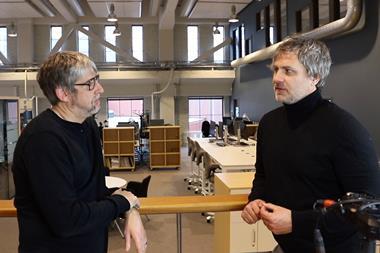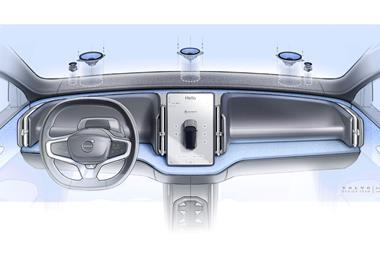Architexture, the recently-launched consultancy division of Standex Engraving, has studios in North America, Europe and Asia to communicate with an international client base. Its newly-opened industrial-chic studio in Fraser, Michigan [pictured here] incorporates a design and texture library, as well as prototyping, research, and development equipment; resources and product portfolio are shared across the company’s global facilities.
“We are constantly searching for new trends in textures and other types of surface treatments, in order to create the next wave of fresh, modern, and unique finish possibilities in vehicle interiors,” says Lilana Nicoghosian [pictured], chief designer, North America. “What excites me the most are all the high-tech materials being introduced to the industry, such as conductive inks and light-transmitting materials, and the ever-evolving use of 3D printing. This has created a new landscape for interior and colour and materials designers to experiment with.”
This new range of possibilities is not without challenges, however. “Whether it’s injection-moulded polymers or thermoplastics, or mould-in colour, each can give you a different outcome of colour and gloss,” she explains. “What the Architexture studio offers is surface harmony throughout all the different plastics, roll goods, soft nickel shell tooled parts, and natural hides used in an interior. We call this Metamorphosis – surface texture coordination and interior harmony. We can work with our OEM design clients to help them strategically design textures that will coordinate with all their interior plastics, as per their brand DNA.”
Looking to future trends, “we will see textures that are morphing and changing both in design and scale,” Nicoghosian continues. “Textures evoking a sensation of organic touch and 3D configurations – very important from a haptics standpoint – will help humanise interiors that are ever-growing in technology. As designers, we understand the power of texturing and touch play on the quality and value of the products we are creating.”
Digitally-rendered textures can be quickly made by Architexture Design Consultancy Studios and applied to clay models, prototype substrates, high density foam, and polyurethane modelling boards and tooling blocks. “We are eliminating the use of expensive tooling at the design and development stage,” says Nicoghosian. “We can quickly turn around a texture idea, and the designer can make changes as they see fit. We 3D-print textures in ultra-high resolution, delivering samples to designers for review. We call these samples RTPs – Rapid Texture Prototypes. This is followed by the verification stage, using our Model-Tech ultra-high resolution RTP skins. These are used for wrapping models for senior management reviews, as well as for show cars and design studio glamour bucks, highly-detailed representations of production interiors.”
Standex Engraving’s 30 global facilities can then produce the developed textures, using techniques including laser engraving and nickel shell tooling. “Laser Texture by Mold-Tech, another Standex division, opens up a further world of opportunity for designers,” says Nicoghosian. “It will give the finest texture fidelity with details and features not previously possible, including multiple gloss levels and haptic touch features, with optimised anti-scratch performance. These finishes can be used in place of paint, and designers can create elements of moving and morphing textures with precise quality. Applications for lens tooling can deliver a jewellery-like appearance, as in our laser-etched BMW X6 headlamp [below]. The true beauty of surface finishes is highly-refined.
“We aim to increase design efficiency through a more seamless process, and better evaluate the interior and its textures as a whole,” she concludes. “Automotive interiors are currently at the brink of a big evolutionary stage. Looking at nature, harmony can be found everywhere. We are excited to contribute our efforts in achieving visual harmony, and are striving to enhance the user’s experience through textures.”

















